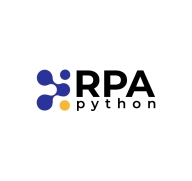


Datamatics TruBot and Python RPA are competing products in the robotic process automation space. Datamatics TruBot has a notable advantage in customer support, whereas Python RPA stands out for flexibility and features, making it the more valuable solution according to data comparisons.
Features: Datamatics TruBot includes integrated AI capabilities, pre-built automation templates, and quick scalability. Python RPA features an open-source framework, extensive libraries, and adaptability providing versatility in customization and extension.
Ease of Deployment and Customer Service: Datamatics TruBot provides a streamlined deployment process with robust customer support and resources for onboarding. Python RPA requires a more manual deployment process but gains flexibility from a large open-source community for support, with Datamatics having the edge in providing clear guidance.
Pricing and ROI: Datamatics TruBot involves a higher initial investment but promises significant ROI through efficient automation leading to cost savings over time. Python RPA offers a lower initial setup cost, valuing affordability, though its ROI depends on the complexity of customizations. Datamatics appears more cost-effective for enterprises seeking quick returns, while Python RPA fits organizations looking for adaptability with modest upfront expenses.
| Product | Market Share (%) |
|---|---|
| Automate | 2.0% |
| Python RPA | 2.0% |
| Datamatics TruBot | 0.4% |
| Other | 95.6% |


| Company Size | Count |
|---|---|
| Small Business | 18 |
| Midsize Enterprise | 8 |
| Large Enterprise | 4 |
Automate offers a user-friendly solution with a drag-and-drop interface for efficient task automation and integration with major platforms like SAP and Azure, making it ideal for quick deployment with minimal coding and training.
Automate provides powerful features for businesses seeking efficient automation, offering compatibility with databases, email integration, and cloud platforms. Its simple interface supports both beginners and experienced users, simplifying tasks like invoice processing, HR automation, and data transformation. Cost-effective pricing and flexible licensing enhance its appeal while integration capabilities and scheduling tools ensure smooth workflow automation.
What are Automate's Key Features?In industries such as healthcare, banking, and logistics, Automate is used for tasks like invoice payment automation, data transformation, and task automation. This leads to streamlined processes and reduced manual workload, illustrating its value in enhancing operational efficiency through diversified workflows.
Datamatics TruBot - https://trubot.datamatics.com/
Python RPA leverages the power of Python to automate repetitive tasks and workflows, offering a flexible and scalable solution. It's designed for integration across business processes, aiming to enhance efficiency and operational productivity with its versatile capabilities.
Python RPA is employed by businesses to streamline operations, reduce manual workload, and achieve cost savings. Combining Python's robust programming capabilities with automation, it appeals to companies looking to enhance their technology stack. Python RPA's strengths lie in its open-source nature that allows easy customization and a vast library of resources supporting automation tasks. This solution supports a wide range of applications, enabling seamless integration into existing systems and promoting innovation.
What are the key features of Python RPA?Python RPA finds applicability in industries like finance for transaction processing, healthcare for patient record management, and manufacturing for supply chain automation. Its adaptability allows companies to fine-tune the tool to sector-specific challenges, ensuring that automation objectives align with business goals.
We monitor all Robotic Process Automation (RPA) reviews to prevent fraudulent reviews and keep review quality high. We do not post reviews by company employees or direct competitors. We validate each review for authenticity via cross-reference with LinkedIn, and personal follow-up with the reviewer when necessary.